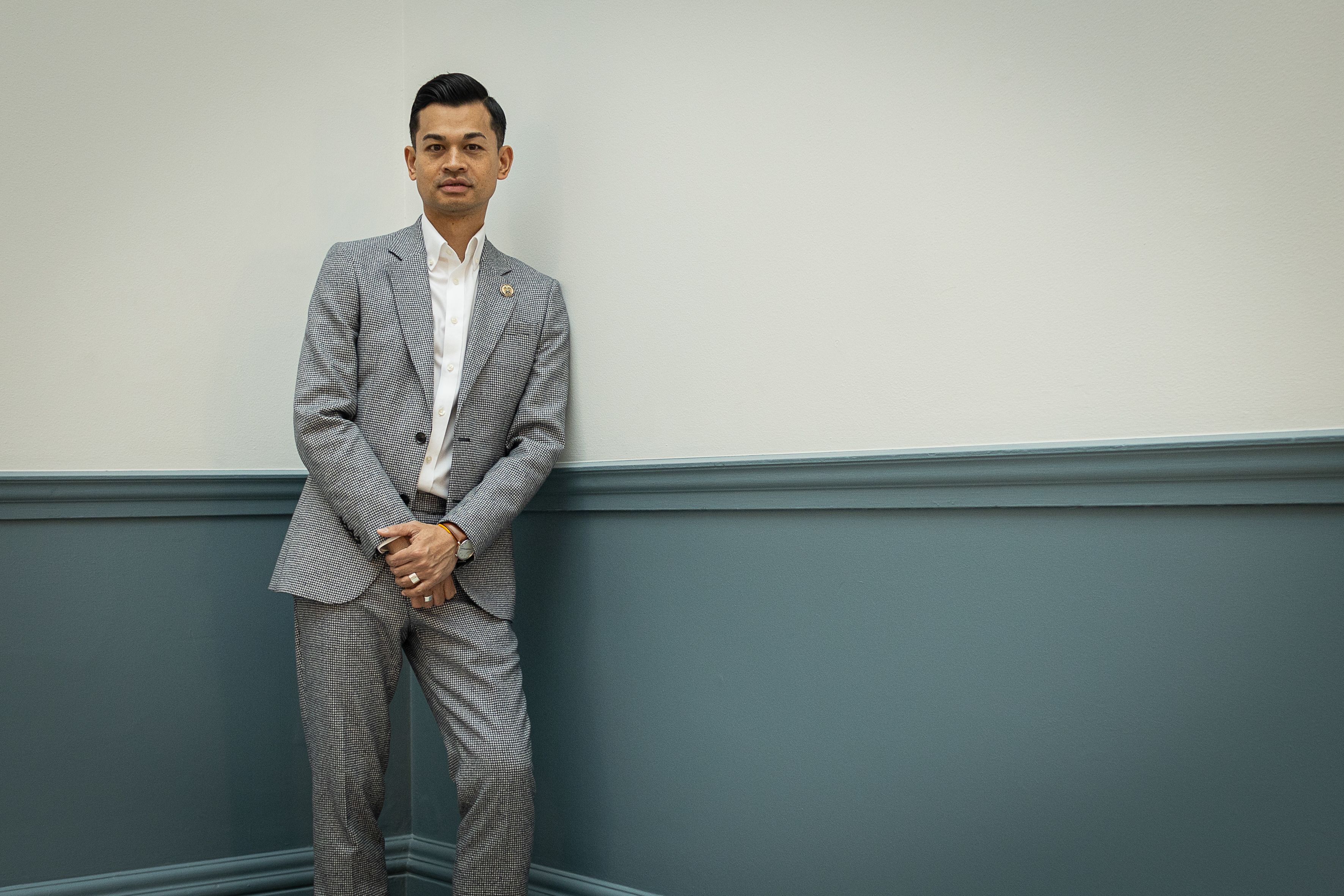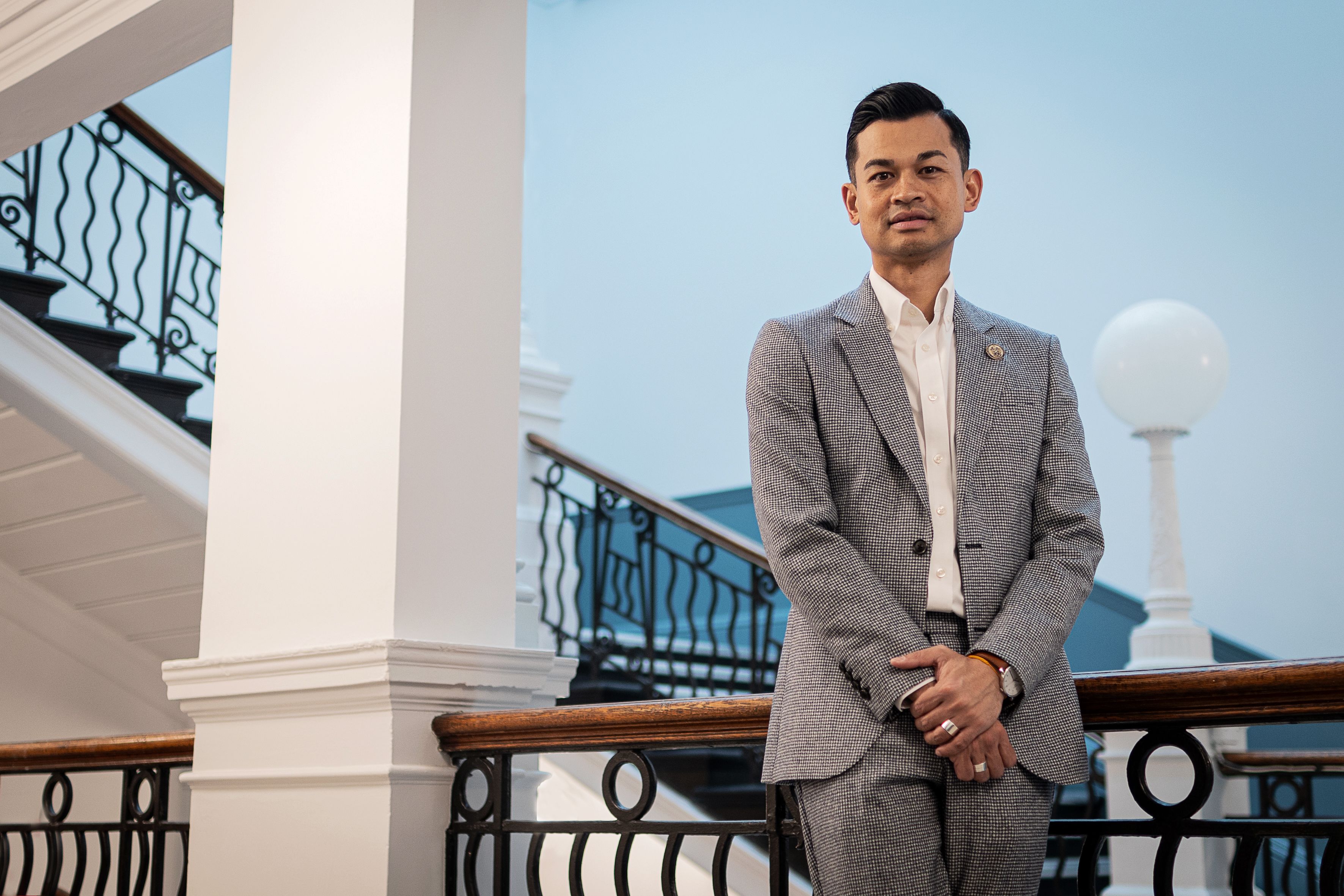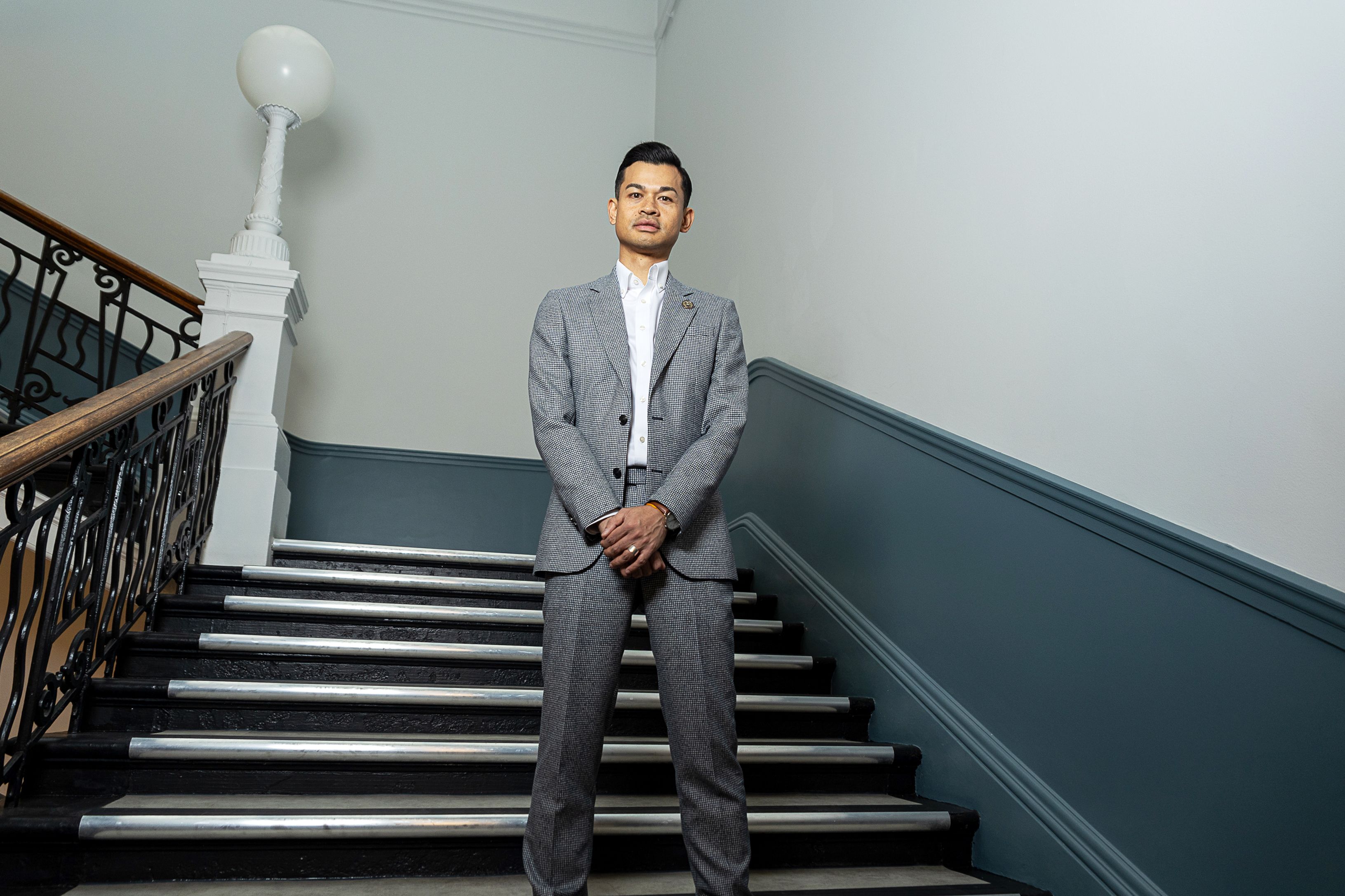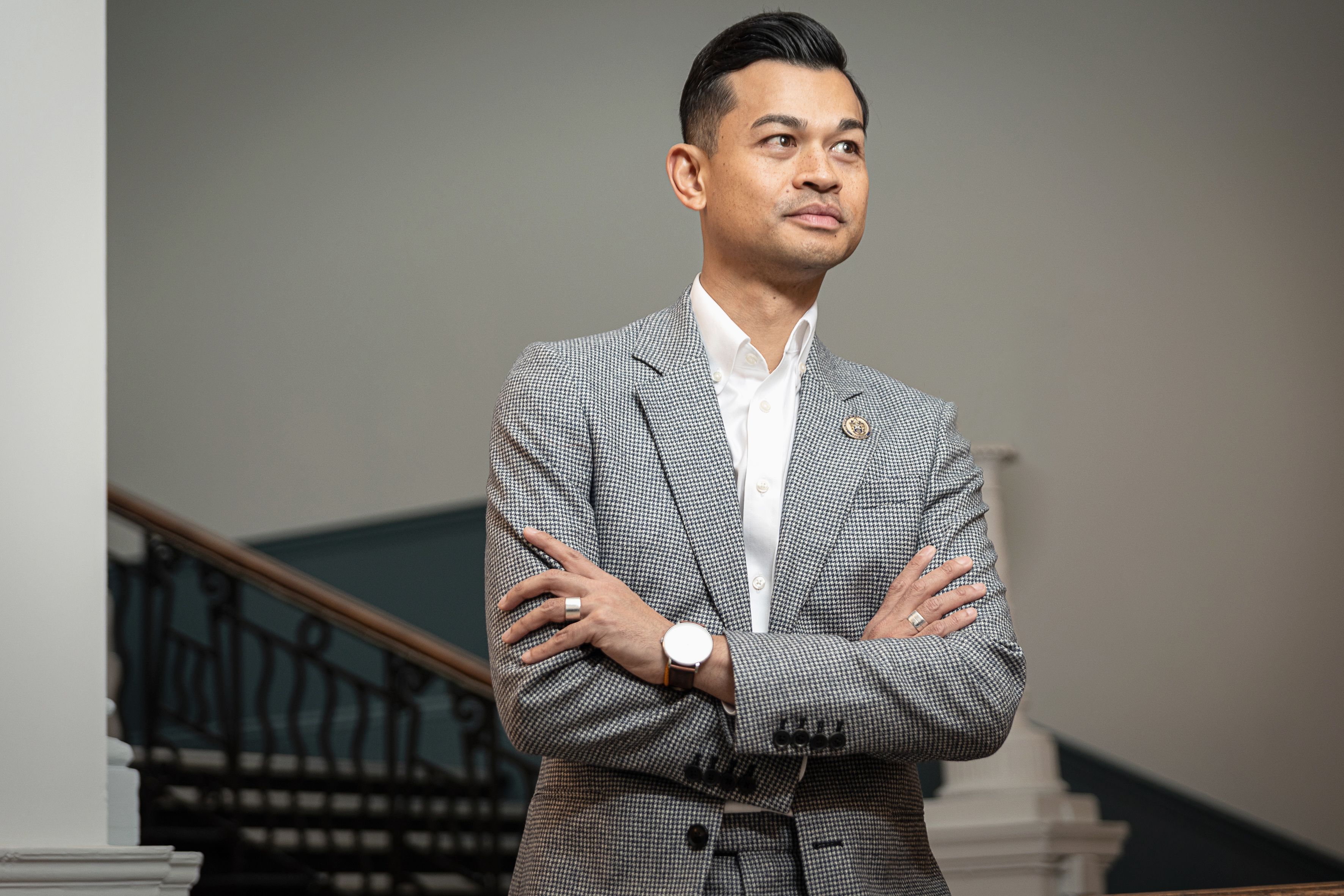Profile: Ricardo Khine
An honour
and privilege


Profile: Ricardo Khine
An honour and privilege
Professor Ricardo Khine has spent his career working to better the radiography profession, first as a clinician and now as an educator and researcher
Role models play a huge part in inspiring professionals, regardless of the discipline.
In radiography, there is no shortage of inspirational, hard-working and dedicated people helping to make the profession a slightly brighter place to work. But it’s also important to take a moment to thank those individuals for their service to radiography - that’s the purpose of the Fellowship of the College of Radiographers (FCR).
Last month, it was the turn of Professor Ricardo Khine, known as Ric, to receive an FCR for his enduring commitment to the radiography profession, and his varied work supporting radiographers, from teaching to research. Synergy caught up with Ric on World Radiography Day (8 November) at his new workplace, Queen Mary University of London, to hear more about his work.
A career highlight
“I’ve been qualified for nearly 24 years,” Ric said on receiving the FCR, “so for me, that recognition is testament to all the activities that I’ve been involved with, that I’ve contributed to - it’s a lovely nod from the Society and the College. For me it’s another career highlight, so I’m really thrilled and really grateful.”
Ric started training as a therapeutic radiographer in 1997, at the School of Radiography based in Ipswich Hospital as part of Suffolk College, now the University of Suffolk. His pathway into radiography may be familiar to many - surrounded by a family of health professionals, Ric initially wanted to be a dentist, but after not achieving his desired grades at A Level, he went through the clearing process to find a university course.
Determined to work in healthcare, Ric began to research new potential careers, and found therapeutic radiography. “Therapeutic radiography caught my eye because of the duality of the role,” he said. “You’ve got the technology, the all-singing all-dancing equipment that you get to use, but you’ve also got the patient care side that I really had an affinity with.
“I felt I could really use my skill set to help patients, to communicate with them, impart my knowledge, and make them feel like they’ve been cared for.”
Ric also quickly found a passion for education, gaining his first glimpse of teaching as a student mentor, to help guide his fellow students. Very early he knew this was a role he wanted to pursue in future.
The next step
As a clinician, he spent 10 years in radiography on the frontline. “I was really able to get to grips with the experience of working in pre-treatment, treatment, also dosimetry and planning,” he said. “So I felt I had a really good, well-rounded knowledge, and I think that has helped me now being in a teaching post, teaching radiography, but also other kinds of healthcare subjects as well.”
During his time in clinical practice, Ric also had the opportunity to work abroad in Australia and the US, which he said was a career highlight and also helped him on his path to academia, giving him broader knowledge, skills, and experience having worked in other healthcare systems.
Ric’s first real taste of professional pedagogy was a role as a lecturer practitioner at Guy’s and St Thomas’ NHS Foundation Trust in London, where he would spend half a week as a therapeutic radiographer and half the week at the university, allowing him to support students on placement while also maintaining his knowledge of the clinical side.
In 2009, Ric made the jump into full time academia as a lecturer in radiotherapy and oncology at City, University of London. He said: “I think very early on I was able to pick up the academic skill set that comes when you move into a university setting. I was then able to progress to different roles within the university.”
Leading the profession
Ric also began to make the move into management within universities, helping him steer the direction of radiography training: “These leadership roles for me have been really important because I think they’ve given me the opportunity to influence change. I’m really hoping that I can be a role model for other people to move into leadership roles, and to show others that we are more than just ‘button pushers.’”
In October this year, Ric moved into a new role with Queen Mary University of London, as professor of medical education and deputy director of the Institute of Health Sciences Education, supporting the university on how it will grow and helping to develop the educational strategy for the institute.
Ric’s career has also given him a vantage point over the biggest issues facing the profession, particularly in therapeutic radiography where the workforce crisis is even more stark than in diagnostic radiography. In the current climate, the cost of living and more importantly the cost of study are among the biggest barriers preventing people from pursuing radiography careers.
“When I trained, we didn’t have to pay tuition fees - we were very lucky at the time,” Ric said. “Now students are having to pay tuition fees and some are really struggling, and it can be a real deterrent to applying for university. I’ve heard that from students.”
Removing tuition fees for health workers is one easy way that the government can help address the workforce crisis, Ric said, as well as continuing to develop the apprenticeship programmes that are already gaining traction.
“I think another key thing for me is professional identity, and people not knowing what therapeutic radiography is. We can really raise the profile and promote the profession in the right way, because I think that will be one of the best things we could do to help with staff shortages.”
Outreach work with young people is important for raising awareness of the profession, Ric said, reaching potential radiographers at a young age to inspire them towards a radiography career. Another major challenge facing the radiography profession is the rapid rate of progress in technology. Keeping up with the times is essential for therapeutic radiographers, and Ric said it was vital for radiographers to embrace new technology and to be trained on the latest developments.
Giving back
Ric also has a long history of work with the Society and College of Radiographers, as an examiner and assessor, alongside sitting on various boards including the radiotherapy advisory group, and he is also on the editorial board for Insight magazine.
“It’s really important, as it goes back to the whole premise of value in the profession, supporting the profession, as they supported me through my training and through my career, giving something back, but also being a role model, hopefully, to others. There’s lots of opportunities within the Society where members, colleagues, and practitioners can be involved. The Society understands what’s happening with the workforce, and I think to have that kind of body to support us is really great for us.”
Well-deserved recognition
During the conversation with Synergy, Ric also delved into some of the topics he is most excited about in radiography. AI is one area of particular interest for Ric, in clinical diagnosis but also wider applications such as workflow optimisation, to help improve outcomes for patients. Developments in imaging are also an area for optimism within radiography, he said, along with technology that is helping educators prepare their students.
“From an educational perspective, in the last couple of years we’ve had virtual reality being used in radiotherapy and diagnostic radiography where we are able to use that virtual environment to teach our students. We’re now into the next phase, augmented reality, that immersive 3D environment, where we can teach our students complex anatomy et cetera, which is very exciting as well.”
All this important work contributed to Ric being awarded the prestigious FCR title from the College of Radiographers at the Radiography Awards, held at the Royal Aeronautical Society in London in November this year.
On receiving the award, Ric said: “I’m really grateful to get that award, and I always have to thank all the people that have helped me in my career, given me opportunities, people that have pushed me and said ‘don’t hold back.’ I’m very humbled and very appreciative of all the people that have influenced my career.”
Find out more...
Visit the Get Involved section of the SoR website to find out how you can volunteer with the Society and College of Radiographers to help the radiographic profession and expand your skills and experience.
Read more about the Radiography Awards here.
Photography: Wayne Campbell




